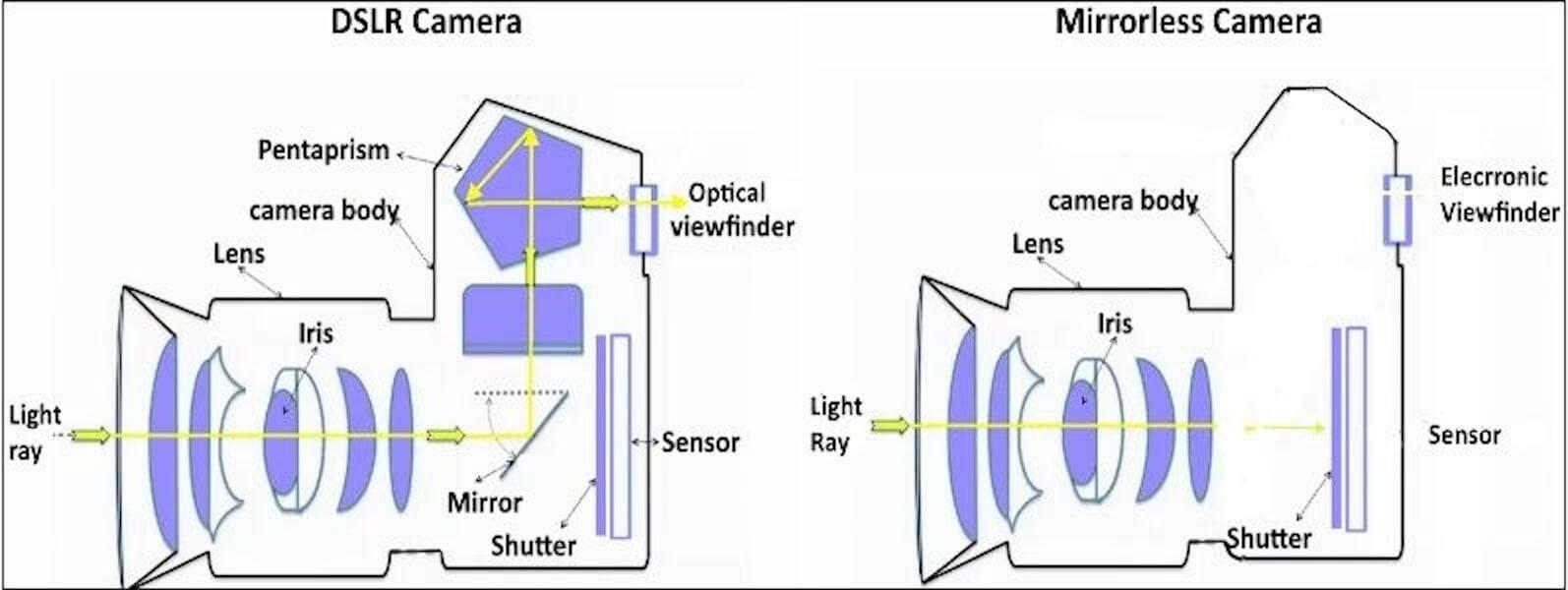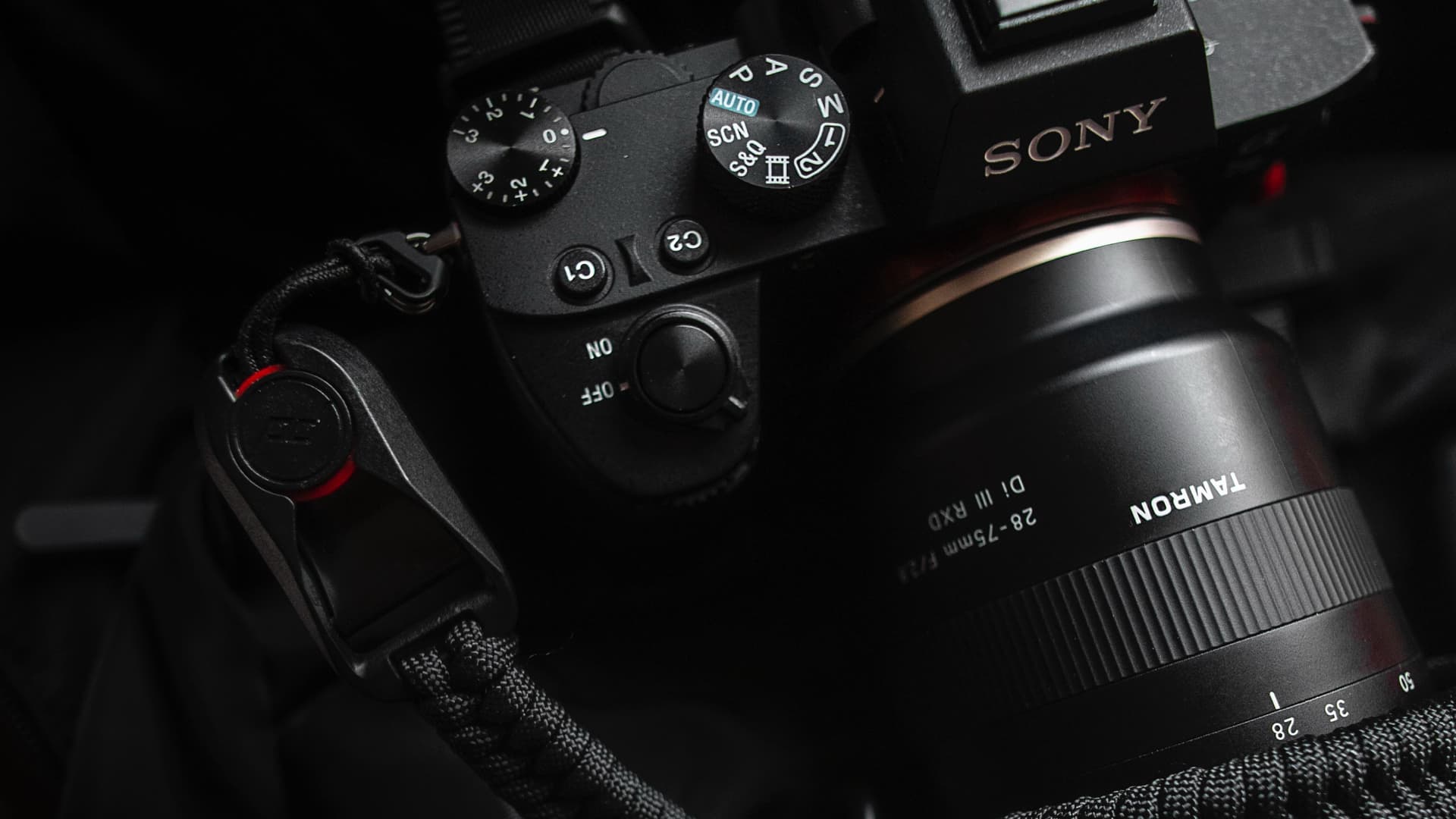If you want to be a filmmaker or photographer, you should probably know a thing or two about the equipment you’ll be using. The ins and outs of camera systems may seem daunting. And there is a lot to know. But the basics are simple. This article, we tackle what is a mirrorless camera by defining it, and comparing it to the most common digital camera on the market, the DSLR. Let’s jump in.
How Does a Mirrorless Camera Work
What exactly is a mirrorless camera?
If you read our article on DSLRs and why they’re different from mirrorless cameras, then you probably have a decent foundation of what this kind of camera is. But in case you missed it, let’s define it.
MIRRORLESS CAMERA DEFINITION
What is a mirrorless camera?
A mirrorless camera is a digital camera that doesn’t have a reflex mirror, (the major component of the DSLR, which reflect the light up to the viewfinder). In a mirrorless, there isn’t a an optical viewfinder. Here, the imaging sensor is always exposed to light. It gives you a preview of the image on the electronic viewfinder (EVF), which is often an LCD screen on the back of the camera.
BENEFITS OF A MIRRORLESS CAMERA
- Lightweight and compact
- Quieter than other cameras
- No flicking mirror means no camera shake
- Reliable video mode
Technically, antiquated camera models do not have mirrors but aren’t considered “mirrorless” in the same way. This comes about after the DSLR to distinguish a digital camera with interchangeable lenses that uses an entirely new “mirrorless” system. See below.
Learn more about mirrorless
This system is best understood in comparison to the digital camera system that came before it, i.e., the digital single-lens camera, or DSLR.
Mirrorless vs DSLRS
The mirrorless in comparison
To fully grasp the mechanics of this system, it’s helpful to know how other digital cameras work. The most common digital camera is the DSLR. Let’s define it.
DSLR Definition
what is a dslr camera?
A DSLR camera is a digital camera body that allows light to enter a single lens where it hits a mirror that reflects the light either upwards or downward into the camera’s viewfinder.
When you press the shutter to take the photo, the mirror flips up out of the way. The shutter then slides open, and light coming from the lens takes a straight shot to the imaging sensor where a photograph is made.
When you snap a picture on a DSLR, the mirror flips up, the light hits the camera’s sensor, and the viewfinder blacks out until the exposure is complete. This is that familiar sound of ‘taking a picture.’ But it also allows for camera shake. Learn more about this in the video below.
Mirrorless vs DSLR
And before we go deeper into the pros and cons, here's a quick diagram of both camera systems.

The basic differences
Pros of Mirrorless Cameras
- The very mechanics of the mirrorless automatically limit camera shake as compared to the DSLR. The mirror isn’t moving up and down because it just isn’t built that way.
- With less moving parts, they're quieter than DSLRs.
- Without the mirror, this camera also beats DSLR in size. It’s small and compact and may be a better option for travel.
- The electronic viewfinder can be used in video mode, while the viewfinder on a DSLR cannot. Also, high resolution is built into most mirrorless even if they’re on the low-end, quality wise. DSLRs offer 4k or Ultra HD video only for higher-end models.
Cons of Mirrorless Cameras
- What’s an asset can also be a liability. Mirrorless cameras are conveniently small but that also means no room for a decent size battery. Battery life goes fast. And because they require you to use the LCD screen and electronic viewfinder, the odds are stacked against you.
- Limited lenses and lens compatibility is a problem with these. Because they’re newer on the scene, there’s just less of a selection and often require third party adapters. Companies like Sony however, have become more proactive with releasing more.
- Price point. Mirrorless and DSLRs are about the same when it comes to higher-end cameras. However, trying to find the best mirrorless camera for beginners is another story. Entry-level DSLRs just have more features and better specs than what mirrorless offers.
If you want to expand your camera knowledge, check out a similar article that dives into the DSLR a bit more. Or check out our next article and find the best mirrorless camera for you.
Related Posts
Up Next
The Best Mirrorless Cameras
Now that you know more about the benefits of these cameras, maybe it’s time to see what’s in the marketplace. Our next post is the ultimate purchasing guide for the best mirrorless cameras.
If you’re thinking of going mirrorless, determine which one is best for you. Check it out below.
Up Next: Guide to the Best Mirrorless Cameras →
Showcase your vision with elegant shot lists and storyboards.
Create robust and customizable shot lists. Upload images to make storyboards and slideshows.
